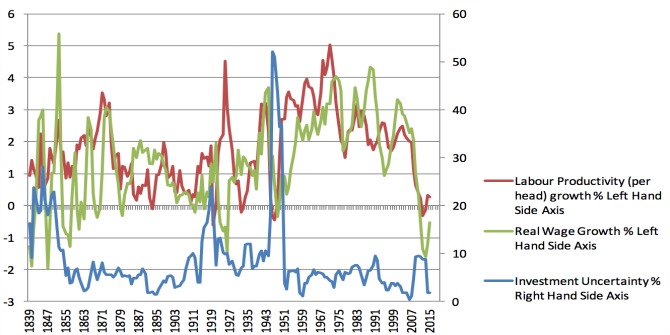 Lydia Hayes writes that social care is a feminist issue. Highlighting some of the appalling conditions that care workers tolerate, she explains how employment law fails to protect women’s employment and to value feminised labour. She concludes that unless social care provision is revolutionised, women will have little choice but to serve as unpaid carers: stuck at home, excluded from public life, and denied life choices.
Lydia Hayes writes that social care is a feminist issue. Highlighting some of the appalling conditions that care workers tolerate, she explains how employment law fails to protect women’s employment and to value feminised labour. She concludes that unless social care provision is revolutionised, women will have little choice but to serve as unpaid carers: stuck at home, excluded from public life, and denied life choices.
Almost a million adults have currently given up paid work to care for friends and relatives. Most of these unpaid carers are women and in large part they are exiting the labour market because social care provision is inadequate. Meanwhile, life for the women who are paid to provide social care has become much harder. As social care provision has been eroded, they have faced a regressive, sexist, and systematic subordination of their interests as women, and because they are women.
The inadequacy of equal pay law
In 1997, most care workers were employed by local authorities and received an employer-funded pension, pay when sick, and the security of 37 hours a week of regular work. However, female care workers were underpaid in relation to men in comparable work. State employers promised that within a decade they would eliminate sexist wages and provide the care workforce with equal pay. This simply didn’t happen. Instead, sexism in wage-setting was effectively put on steroids through privatisation: the care workforce of today is employed in jobs which carry less than half the financial value of the jobs that care workers occupied 20 years ago. A systematic degradation has also been made possible by the utter inadequacy of equal pay law. Evidently, the Equal Pay Act 1970, and provisions in the Equality Act 2010 which replaced it, are not fit for purpose.
Equal pay law was supposed to ensure that the blight of sexism in pay-setting was eradicated. Not so for care workers. Where women do not work in close proximity to men, equal pay law offers very little and prevents women from comparing their wages to those of men who do not work for the same employer. It is a widespread misunderstanding that equal pay law protects the wages of women: it does not. Rather, the right to equal pay prevents male wages from being undercut. Inadequacies in equal pay law perpetuate the historic subordination of women in low-waged work, prevent care workers from achieving economic independence, and exemplify the economic invisibility of skills and abilities which are thought to arise ‘naturally’ in women.
The inadequacy of minimum wage law
The financial crisis of 2007/2008 heralded UK labour market changes in which care work became the largest source of low-waged work for women. The real value of the national minimum wage fell each year until 2014. For more than a decade, politicians and policy-makers were aware of minimum wage law being flouted in the social care industry. Nothing was done despite voluminous evidence that huge numbers of care workers were paid unlawfully low wages.
In various forms, non-compliance with national minimum wage law has continued even though the state is the main customer as well as the regulatory overseer of the social care industry. When the social care minimum wage scandal of 2017 highlighted that thousands of care workers were paid nothing more than pocket-money to ensure the overnight well-being of vulnerable adults, employers were outraged that they should have to pay care workers what was legally owed. The government’s initial response was to suspend the full enforcement of minimum wage law in the social care sector; months later, it implemented an industry-specific exception scheme in which care workers will not receive all the wages to which they are entitled until March 2019 and employers will avoid penalty fines.
The inadequacy of statutory pay protection
Yet a lack of political interest in enforcement has not been the only minimum wage issue to blight care workers’ earnings. Care workers are failed by the current right to a minimum wage where their work is not recognised as ‘work’ for the purposes of statutory pay protection. Regulations exempt the work of co-habiting family members paid as care workers via direct payments from minimum wage protection. Regulations also exempt the work of care workers who live-in and are treated ‘like family’ by their employers from minimum wage protection. In case law, the work of carers who are contractually required to remain on-site during lengthy shifts is not automatically recognised as ‘work’. Judges have devised special tests to apply when care workers bring minimum wage claims. Unlike the situation facing other workgroups, it is not enough for care workers to simply be present because their contract requires it: they must additionally show they are busy, needed, working alone or carrying special responsibility for others.
The engrained culture of non-payment
The National Minimum Wage Act 1998 and its accompanying regulations were supposed to communicate the universal value of paid work but do not require employers to pay for all the hours they require a worker to work. The scheme merely calculates a minimum wage total to be met or exceeded when pay is averaged across all hours worked. Although the right to a minimum wage was supposed to prevent exploitation, it has become standard industry practice for care workers to work for free during increasingly large parts of each working day. For example, in 2014, homecare employers calculated that workers were unpaid for an average of 19% of their working time due to non-payment of travel time between clients. On top of this, they were routinely unpaid for time spent training, waiting for ambulances or other healthcare professionals, time spent waiting for co-workers to help them lift heavy clients, time spent in supervision meetings with management – and the list goes on. An engrained culture of non-payment in the care industry has been made possible by the inadequacy of UK minimum wage law.
Why all this matters
Hands-on care work is the UK’s most highly female-segregated occupation. Traditionally, women are expected to provide care for free within families and they continue to provide the vast majority of unpaid work at home. A sex-based ideology about women’s subservience to the needs of others still circulates in the contemporary labour market, and minimum wage law does not do enough to assert the value of care work.
There are two million workers in adult social care, the vast majority of them women. If we continue to tolerate care workers being employed to work without pay, the future of care work will be based on sexist expectations that care work should be done for free. Unless we stand up and demand that carers’ skills attract decent economic reward, the future of social care will be based on the idea that caring skills are ‘natural’ for women and don’t have to be paid for. Until the wages of care workers are free from sexist devaluation, and until the work of care workers is fully recognised, the labour of all women is devalued.
_________
Note: the above draws on the author’s award-winning monograph, Stories of Care: A Labour of Law. Gender and Class at Work.
 Lydia Hayes is Lecturer in Law at Cardiff University.
Lydia Hayes is Lecturer in Law at Cardiff University.
All articles posted on this blog give the views of the author(s), and not the position of LSE British Politics and Policy, nor of the London School of Economics and Political Science. Featured image: Pixabay (Public Domain).








Totally agree with you, I have been forced to leave a well loved and paying career to look after my disabled Hubby full time, mainly because of the state of care-work in this country. Care-work needs to be professionalised, have equal status to that which is carried out in a hospital setting.
Why are there no links in the above article to information supporting each of the claims it makes? That is usual practice for articles that appear on here, and a singe link to a page where readers have the opportunity to purchase the author’s book is not really an adequate substitute.